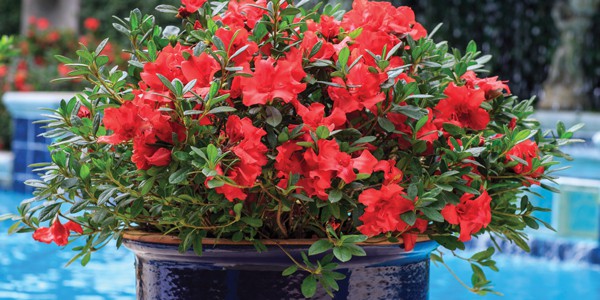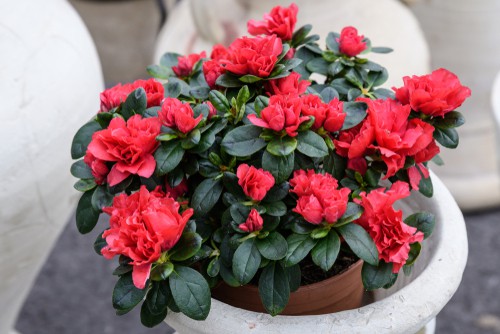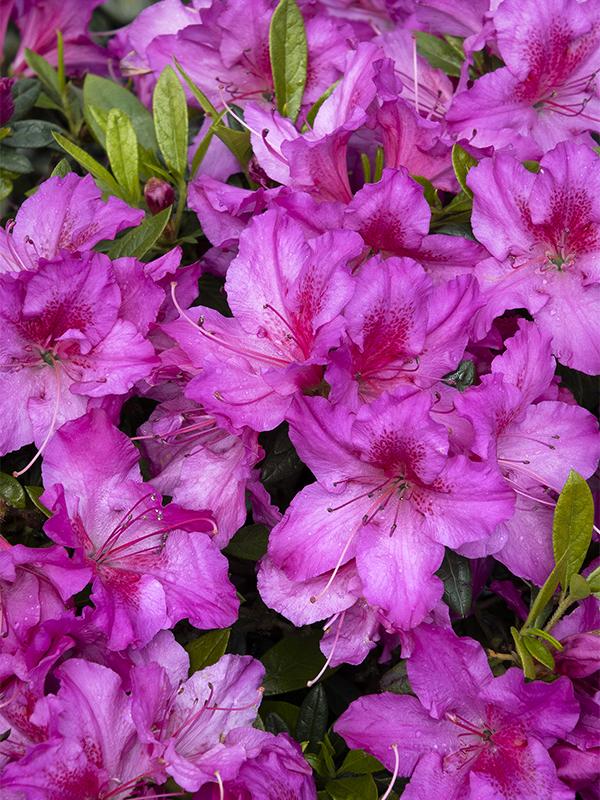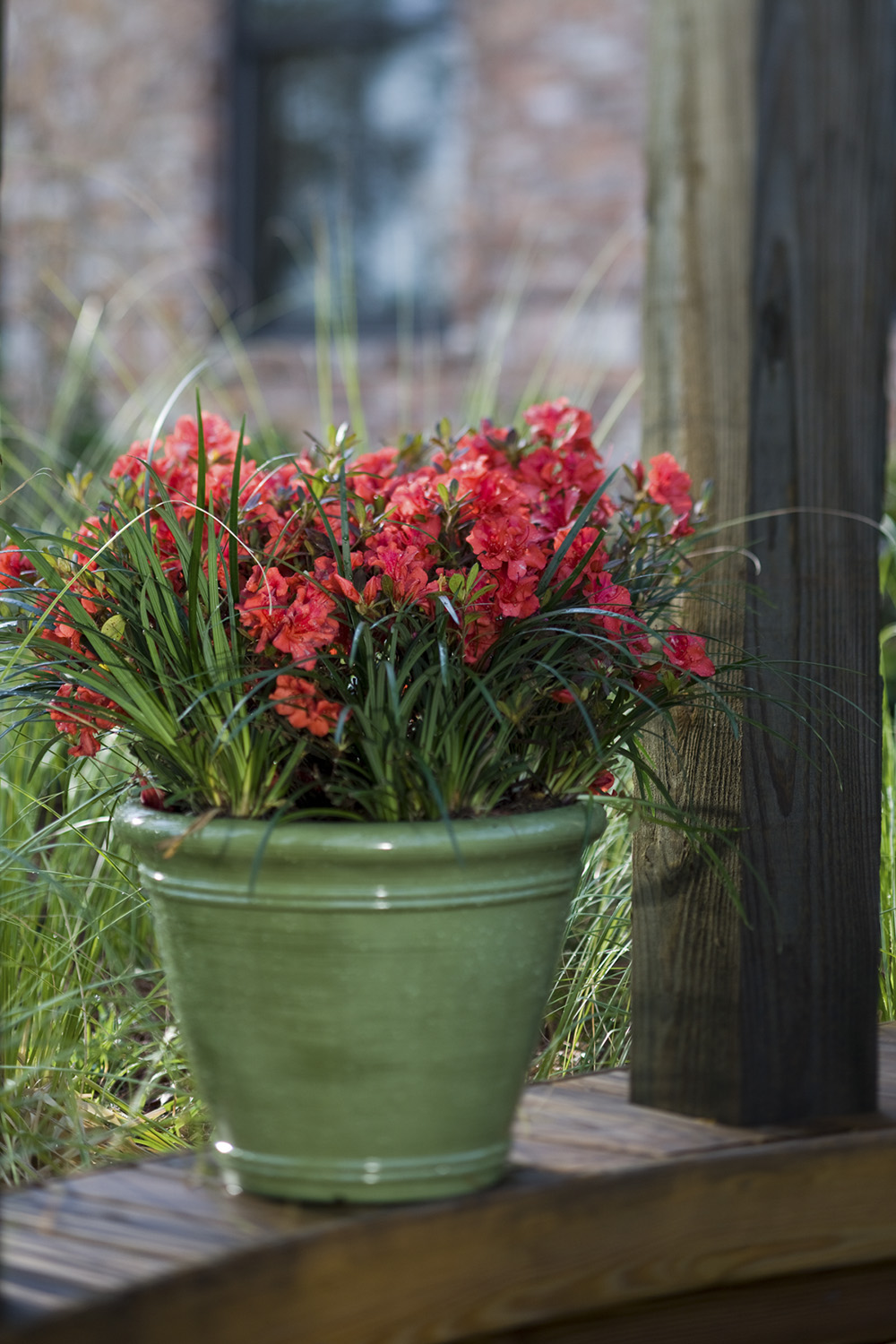Unlocking the Potential of Azaleas in Pots
Azaleas are a popular choice for gardeners due to their vibrant blooms and relatively low maintenance requirements. While they are often associated with in-ground planting, many varieties of azaleas can thrive in containers, providing flexibility and space-saving options for gardeners. In fact, growing azaleas in pots can be a great way to enjoy these beautiful flowers on balconies, patios, or even indoors. But can azaleas grow in pots? The answer is yes, and with the right care and attention, they can flourish in containers.
Container gardening offers several benefits, including the ability to move plants to different locations, control soil quality, and extend the growing season. Azaleas, in particular, can benefit from the improved drainage and aeration that containers provide. Additionally, container-grown azaleas can be easily protected from extreme weather conditions, such as frost or intense sunlight.
When growing azaleas in pots, it’s essential to choose a variety that is compact or dwarf, specifically bred for container growing. These varieties tend to be more compact and produce fewer roots, making them ideal for containers. Some popular varieties of azaleas for container growing include ‘Hinode-giri’ and ‘Pink Ruffle’. These varieties are not only compact but also produce vibrant blooms that can add a pop of color to any container garden.
By growing azaleas in pots, gardeners can enjoy year-round blooms and flexibility in their gardening endeavors. With the right care and attention, container-grown azaleas can thrive and provide beautiful flowers for months to come. Whether you’re a seasoned gardener or just starting out, growing azaleas in pots is a great way to add some color and vibrancy to your outdoor or indoor space.
Choosing the Right Azalea Variety for Container Growing
When it comes to growing azaleas in pots, selecting the right variety is crucial for success. Not all azaleas are created equal, and some are better suited for container growing than others. Compact, dwarf, or specifically bred varieties are ideal for containers, as they tend to be more compact and produce fewer roots.
Some popular varieties of azaleas for container growing include ‘Hinode-giri’ and ‘Pink Ruffle’. These varieties are not only compact but also produce vibrant blooms that can add a pop of color to any container garden. ‘Hinode-giri’ is a dwarf variety that grows to be around 2-3 feet tall and produces bright pink flowers, while ‘Pink Ruffle’ is a compact variety that grows to be around 3-4 feet tall and produces delicate pink flowers.
Other factors to consider when selecting an azalea variety for container growing include the plant’s mature size, growth habit, and hardiness zone. It’s essential to choose a variety that is suitable for your climate and can thrive in a container. By selecting the right variety, you can ensure that your azalea will grow and bloom well in its container.
In addition to compact and dwarf varieties, some azaleas are specifically bred for container growing. These varieties are often labeled as “container-friendly” or “patio-friendly” and are designed to thrive in smaller spaces. They may have smaller leaves, more compact growth habits, or be more tolerant of wind and sun.
By choosing the right azalea variety for container growing, you can enjoy beautiful blooms and a thriving plant, even in small spaces. Whether you’re a seasoned gardener or just starting out, selecting the right variety is the first step towards growing a healthy and vibrant azalea in a pot.
How to Select the Perfect Pot for Your Azalea
When it comes to growing azaleas in pots, selecting the right pot is crucial for the health and well-being of the plant. The pot should provide the right balance of size, material, drainage, and aeration to support the growth of the azalea. In this section, we will discuss the key factors to consider when choosing a pot for your azalea.
Size is an important consideration when selecting a pot for your azalea. The pot should be large enough to accommodate the mature size of the plant, but not so large that it becomes too heavy or unwieldy. A general rule of thumb is to choose a pot that is at least 6-8 inches deep and 8-10 inches wide. This will provide enough room for the roots of the azalea to grow and thrive.
The material of the pot is also important. Ceramic and terracotta pots are popular choices for azaleas because they are breathable and allow for good drainage. These materials also tend to be more durable and long-lasting than other options. Avoid using plastic or metal pots, as they can retain too much heat and moisture, which can be detrimental to the health of the azalea.
Drainage is another critical factor to consider when selecting a pot for your azalea. Azaleas prefer well-draining soil, and a pot with good drainage holes will help to prevent waterlogged soil and root rot. Look for pots with built-in drainage holes or consider adding a layer of broken pottery or small rocks to the bottom of the pot to improve drainage.
Aeration is also important for the health of the azalea. A pot with good aeration will allow for air to circulate around the roots of the plant, which will help to prevent root bound and promote healthy growth. Consider using a pot with built-in aeration holes or adding a layer of perlite or vermiculite to the soil to improve aeration.
By considering these factors, you can select a pot that will provide the right environment for your azalea to thrive. Remember, the pot is just one part of the equation – be sure to also choose a high-quality potting soil and fertilize your azalea regularly to ensure optimal growth and blooming.
Soil and Fertilization: Creating an Ideal Environment for Azaleas in Pots
Azaleas in pots require a specific type of soil and fertilization to thrive. Using acidic potting soil is essential, as azaleas prefer a slightly acidic to acidic soil pH (5.5-6.5). A well-draining potting mix specifically designed for acid-loving plants like azaleas, rhododendrons, and blueberries is ideal.
When it comes to fertilization, azaleas in pots require regular feeding to promote healthy growth and blooming. A balanced, water-soluble fertilizer (20-20-20) can be used, but it’s essential to choose a fertilizer that is specifically formulated for acid-loving plants. Miracid and Espoma Organic Azalea Tone are two excellent options that provide the necessary nutrients for azaleas in pots.
It’s also important to note that azaleas in pots may require more frequent fertilization than those planted in the ground. This is because the soil in pots can become depleted of nutrients more quickly, especially if the pot is small. Fertilizing every 2-4 weeks during the growing season (spring-fall) can help promote healthy growth and blooming.
In addition to regular fertilization, it’s also essential to repot your azalea every 2-3 years to refresh the soil and provide a larger pot if necessary. This will help prevent the soil from becoming depleted of nutrients and ensure the continued health and growth of your azalea.
By using the right type of soil and providing regular fertilization, you can create an ideal environment for your azalea in a pot. This will help promote healthy growth, blooming, and overall well-being, allowing you to enjoy your azalea in a pot for years to come.
Watering and Humidity: Tips for Healthy Azalea Growth in Containers
Watering and humidity are crucial factors to consider when growing azaleas in pots. Azaleas prefer consistent moisture levels, but overwatering can be detrimental to their health. It’s essential to find the right balance to ensure healthy growth and blooming.
When watering your azalea in a pot, make sure to check the soil moisture by sticking your finger into the soil up to the first knuckle. If the soil feels dry, it’s time to water. Water your azalea thoroughly, but avoid getting water on the leaves or crown of the plant. This can cause fungal diseases and other problems.
Humidity is also important for azaleas in pots. Azaleas prefer a humid environment, typically between 40-60% relative humidity. To maintain the right humidity levels, you can place the pot on a tray filled with water and pebbles or use a humidifier nearby.
Avoid overwatering, which can lead to root rot and other problems. If you notice the leaves turning yellow or droopy, it may be a sign that the plant is receiving too much water. Reduce the frequency of watering and ensure good drainage to prevent waterlogged soil.
On the other hand, underwatering can also be problematic. If the soil is too dry for an extended period, the plant may become stressed, leading to reduced growth and blooming. Monitor the soil moisture regularly and adjust your watering schedule accordingly.
By maintaining consistent moisture levels and humidity, you can create an ideal environment for your azalea in a pot. This will help promote healthy growth, blooming, and overall well-being, allowing you to enjoy your azalea in a pot for years to come.
Pruning and Grooming: Maintaining the Shape and Health of Your Azalea
Pruning and grooming are essential for maintaining the shape and health of your azalea in a pot. Regular pruning helps to control the size and shape of the plant, promotes healthy growth, and encourages blooming. It’s also important to remove dead or damaged leaves and stems to prevent the spread of disease and pests.
When pruning your azalea, use sharp, clean pruning tools to avoid spreading disease. Remove any dead or damaged leaves or stems, and cut back overgrown branches to maintain the desired shape. You can also prune your azalea to encourage blooming by removing any weak or spindly growth.
Deadheading is another important aspect of pruning and grooming. Remove any spent flowers to encourage your azalea to produce more blooms. This will also help to maintain the appearance of your plant and prevent it from looking leggy or unkempt.
Pest control is also an important aspect of pruning and grooming. Check your azalea regularly for signs of pests, such as aphids, whiteflies, or spider mites. Use organic or chemical controls as needed to prevent infestations and maintain the health of your plant.
Regular grooming also helps to maintain the health and appearance of your azalea. Remove any debris or dead leaves from the pot, and inspect the plant regularly for signs of disease or pests. This will help to prevent problems from developing and keep your azalea looking its best.
By pruning and grooming your azalea regularly, you can maintain its shape and health, promote blooming, and prevent problems from developing. This will help to ensure that your azalea in a pot remains a beautiful and thriving addition to your garden or indoor space.
Common Challenges and Solutions for Growing Azaleas in Pots
While growing azaleas in pots can be a rewarding experience, there are some common challenges that may arise. In this section, we will discuss some of the most common issues that may occur and provide solutions and troubleshooting tips to help you overcome them.
One of the most common challenges when growing azaleas in pots is root bound. This occurs when the roots of the plant become too large for the pot and begin to circle around the inside of the container. To prevent root bound, make sure to choose a pot that is large enough to accommodate the mature size of the plant. You can also repot your azalea every 2-3 years to provide fresh soil and a larger pot if necessary.
Pests are another common issue when growing azaleas in pots. Aphids, whiteflies, and spider mites are all common pests that can infest azaleas. To prevent pest infestations, make sure to inspect your plant regularly and use organic or chemical controls as needed. You can also use neem oil or insecticidal soap to control pest populations.
Diseases are also a common challenge when growing azaleas in pots. Fungal diseases such as root rot and leaf spot can occur if the plant is not receiving enough air circulation or if the soil is too wet. To prevent diseases, make sure to provide good air circulation around your plant and avoid overwatering. You can also use fungicides to control disease outbreaks.
Another common issue when growing azaleas in pots is nutrient deficiency. Azaleas require acidic soil and may become deficient in nutrients if the soil is not acidic enough. To prevent nutrient deficiency, make sure to use acidic potting soil and fertilize your azalea regularly with an acidic fertilizer.
By being aware of these common challenges and taking steps to prevent them, you can ensure that your azalea in a pot remains healthy and thriving. Regular maintenance and care can help to prevent many of these issues from arising, and troubleshooting tips can help you to overcome any problems that may occur.
Year-Round Care: How to Enjoy Your Azalea in Pot Throughout the Seasons
Azaleas in pots require year-round care to ensure they remain healthy and thrive. In this section, we will discuss how to care for your azalea in a pot during different seasons, including winter protection, spring fertilization, and summer pruning.
During the winter months, azaleas in pots require protection from cold temperatures and frost. Move your azalea to a protected location, such as a garage or indoor space, to prevent damage from cold temperatures. You can also use a frost blanket or sheet to cover your azalea and protect it from frost.
In the spring, azaleas in pots require fertilization to promote healthy growth and blooming. Use an acidic fertilizer, such as Miracid or Espoma Organic Azalea Tone, to provide your azalea with the necessary nutrients. Follow the instructions on the fertilizer package for application rates and timing.
During the summer months, azaleas in pots require regular pruning to maintain their shape and promote healthy growth. Prune your azalea after it finishes blooming to encourage new growth and prevent it from becoming leggy. You can also deadhead spent flowers to promote more blooming.
In the fall, azaleas in pots require preparation for the winter months. Stop fertilizing your azalea in the fall to allow it to prepare for dormancy. You can also prune your azalea in the fall to maintain its shape and promote healthy growth.
By following these year-round care tips, you can enjoy your azalea in a pot throughout the seasons. With proper care and attention, your azalea will remain healthy and thrive, providing you with beautiful blooms and a stunning display of color.








